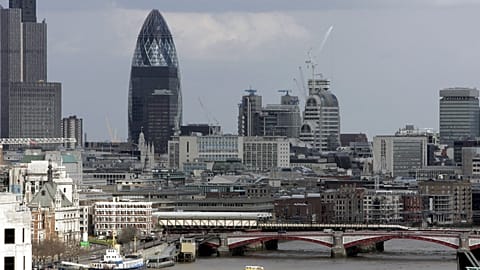Eurostat data for March 2024 revealed a drop in annual consumer price inflation to 2.4%, below the expected 2.6% and hitting a four-month low. Market foresees four ECB rate cuts by end-2024, with the first expected in June.
Eurozone inflation fell more than economists had anticipated last month, further solidifying expectations of monetary policy easing by the European Central Bank in the upcoming months.
In March 2024, the annual consumer price inflation rate in the Euro Area dropped from 2.6% to 2.4%, according to preliminary data from Eurostat released on Wednesday. This marked a four-month low and fell below expectations of a stable reading.
Notably, services had the highest annual rate in March (4.0%, unchanged from February), followed by food, alcohol & tobacco (2.7%, down from 3.9% in February), non-energy industrial goods (1.1%, down from 1.6% in February), and energy (-1.8%, up from -3.7% in February).
Among Euro Area members, Croatia (4.9%), Austria (4.2%), Estonia (4.1%), and Belgium (3.8%) recorded the highest annual inflation rates, while Lithuania (0.3%), Finland (0.7%), Latvia (1%), and Italy (1.3%) had the lowest.
The core inflation rate, excluding volatile food and energy items, decreased from 3.1% to 2.9%, hitting a two-year low.
Market expectations, ECB inflation forecasts, and risks ahead
The latest data on inflation should align with expectations of an ECB rate cut in June.
The interest rate market currently reflects full anticipation of four rate cuts by the ECB by the end of 2024, with the first expected to commence in June.
Recent public statements from ECB President Christine Lagarde underscored the expectation for continued inflation decline in the Euro area. However, she emphasised the need for ECB decisions to remain data-dependent and determined meeting-by-meeting.
Prior to the inflation release on Wednesday, ECB member Robert Hollzman expressed his lack of objection to a June rate cut, yet emphasised the importance of further supportive data. He also cautioned against rate cuts misalignment with the Federal Reserve, which could diminish the efficacy of policy easing.
The latest ECB projections indicated an annual average headline inflation of 2.3% in 2024, 2.0% in 2025, and 1.9% in 2026.
However, there are rising risks associated with recent increases in oil prices.
Brent crude has surged by 15% since the year's outset, reaching $89 per barrel in early April. ECB's economic staff projections in March assumed an average oil price of $79 per barrel for 2024.
Should crude prices persist at these elevated levels or rise further in the coming months, they would inevitably impact inflation in Europe, potentially slowing down ECB rate cut plans.
Expert’s comments on latest inflation data
According to Kyle Chapman, FX Markets Analyst at Ballinger Group, it is increasingly evident that concerns regarding second-round wage effects are exaggerated, and they do not pose a significant obstacle to the disinflationary path.
Chapman believes that the sustainable trend towards the 2% target is indisputable and that “there will certainly be some dovish dissent within the Governing Council next week.”
“At the very least, there needs to be some serious discussion about what the cutting cycle will look like and potentially a pre-announcement that they intend to cut in June,” he added.
Market reactions
In Wednesday's session, the euro experienced a slight weakening against the US dollar, remaining below the 1.0780 levels. This trend reflects investors' anticipation of a greater inclination by the ECB to cut rates in June compared to the Federal Reserve.
The German Bund maintained a 2.4% yield, consistent with Tuesday's closing levels.
European stock markets made efforts to rebound following the previous day's negative close. The DAX 40 rose by 0.5% in Frankfurt, while the CAC 40 and IBEX 35 increased by 0.3%. However, the Euro Stoxx 600 saw a more modest advancement, rising only by 0.1%.


















